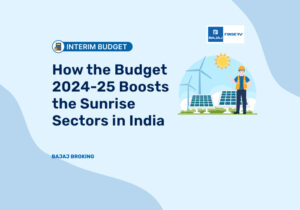GST Changes in Interim Budget 2024: What You Need to Know
Last Updated on February 2, 2024 by ethinos

The Interim Budget 2024, presented by Finance Minister Nirmala Sitharaman on February 1, 2024, has brought some relief and reforms for the taxpayers and businesses under the Goods and Services Tax (GST) regime. While major legislative changes in GST require the approval of the GST Council, the budget has indicated the direction and vision for the next phase of GST evolution.
Here are some of the key highlights and expectations from the budget related to GST.
Table of Content [hide]
Rationalisation of GST Slabs
One of the long-standing demands of the GST stakeholders has been to simplify the GST rate structure by reducing the number of slabs. Currently, there are four main slabs of 5%, 12%, 18%, and 28%, apart from the zero-rated and exempted categories, and special rates for some goods and services. The budget has announced that the government will work towards rationalising the GST slabs and bringing more items under the lower slabs, to ease the compliance burden and reduce the tax incidence for the consumers.
Additional Read: What is Interim Budget?
Inclusion of Excluded Sectors
Another major reform that the budget has hinted at is the inclusion of the previously excluded sectors, such as petroleum and electricity, under the GST ambit. These sectors are currently subject to multiple taxes levied by the central and state governments, which increase the cost and complexity for the producers and consumers. Bringing them under GST will not only create a uniform and simplified tax system, but also enhance the revenue collection and input tax credit availability for the businesses.

Measures for MSMEs and Small Traders
The budget has also proposed some special measures and relief for the Micro, Small, and Medium Enterprises (MSMEs) and small traders, considering their vital role in the economy and the challenges they face due to the pandemic. Some of the expected measures are:
- Easing the compliance norms and filing requirements for the MSMEs and small traders, such as extending the due dates, simplifying the forms, and allowing quarterly returns.
- Providing specific tax benefits and incentives for the MSMEs and small traders, such as increasing the turnover threshold for the composition scheme, reducing the tax rates, and waiving off the penalties and interest for delayed payments.
- Facilitating the digitalization and automation of the GST processes for the MSMEs and small traders, such as enabling e-invoicing, real-time reporting, and online verification of returns.
Digitalisation Initiatives
The budget has also emphasised the importance of digitalisation and technology in enhancing the efficiency and transparency of the GST system. Some of the initiatives that the budget has announced or suggested are:
- Expanding the scope and coverage of e-invoicing, which is currently mandatory for businesses with turnover above Rs 50 crore, to include more taxpayers and transactions.
- Introducing a new system of real-time reporting and verification of GST returns, which will enable faster processing and refund of taxes, and reduce the scope for errors and frauds.
- Automating the generation and reconciliation of GST returns, based on the data captured from e-invoicing, e-way bills, and other sources, which will eliminate the need for manual intervention and duplication of work.
Focus on Sector-Specific Issues
The budget has also addressed some of the sector-specific GST issues, such as those affecting the manufacturing, services, or export sectors, and provided targeted relief or reforms. Some of the examples are:
- Reducing the GST rates on some of the essential goods and services, such as medicines, medical equipment, education, and hospitality, to provide relief to the consumers and the sectors hit by the pandemic.
- Resolving the issue of inverted duty structure, where the GST rate on inputs is higher than the GST rate on outputs, which leads to accumulation of input tax credit and cash flow problems for the manufacturers.
- Streamlining the refund process and mechanism for the exporters, who are entitled to claim refund of the GST paid on inputs or exports, and ensuring timely and hassle-free disbursal of the refunds.
Wrapping Up
The Interim Budget 2024 has set the tone for the future of GST in India, and has shown the government’s commitment to make it more simple, rational, and taxpayer-friendly. The GST stakeholders can look forward to more clarity and certainty in the GST regime, and hope for a positive impact on their business and growth.

